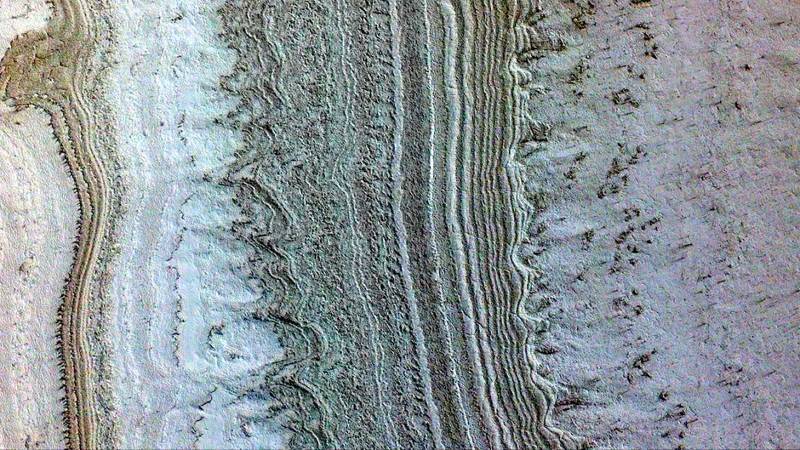The notion of a hidden lake beneath the south polar ice cap of Mars has captivated scientists and the public alike since it was proposed in 2018. Where there is liquid water, the thinking goes, there could be life. But a new study by researchers at Cornell University offers a simpler, if less sensational, explanation for the bright radar reflections that sparked the subglacial lake hypothesis.
Using computer simulations, Daniel Lalich and his colleagues showed that small variations in the composition and thickness of water ice layers – too subtle for ground-penetrating radar to resolve – can cause radar waves to interfere with each other in ways that match the observed signals. The study, published June 7 in Science Advances, suggests that such interference could occur not just in the area thought to harbor liquid water, but across the entire south polar layered deposits.
A Matter of Interference
On Earth, bright radar reflections from beneath an ice sheet would likely indicate the presence of a subglacial lake. But the temperature and pressure conditions on Mars are very different, Lalich said. He had previously shown that the radar signals could be created without liquid water, but those models relied on assumptions about frozen carbon dioxide layers that were probably incorrect.
The new research tells a more complete story, closing gaps in the radar interference hypothesis with more realistic modeling. The team ran thousands of simulations based on known conditions at the Martian poles, varying the composition and spacing of ice layers in ways that would be expected over tens or hundreds of miles.
A Simpler Story
Those slight adjustments sometimes produced bright subsurface signals consistent with observations in each of the three frequencies used by the Mars Express orbiter’s MARSIS radar instrument. The reason, Lalich argues, is straightforward: Radar waves bouncing off layers spaced too closely for the instrument to resolve may combine, amplifying their peaks and troughs.
“This is the first time we have a hypothesis that explains the entire population of observations below the ice cap, without having to introduce anything unique or odd,” Lalich said. “This result where we get bright reflections scattered all over the place is exactly what you would expect from thin-layer interference in the radar.”
While not ruling out the potential for some future detection by more capable instruments, Lalich said he suspects the story of liquid water and potential life on the red planet ended long ago.
“The idea that there would be liquid water even somewhat near the surface would have been really exciting,” Lalich said. “I just don’t think it’s there.”
The research was supported by NASA.


